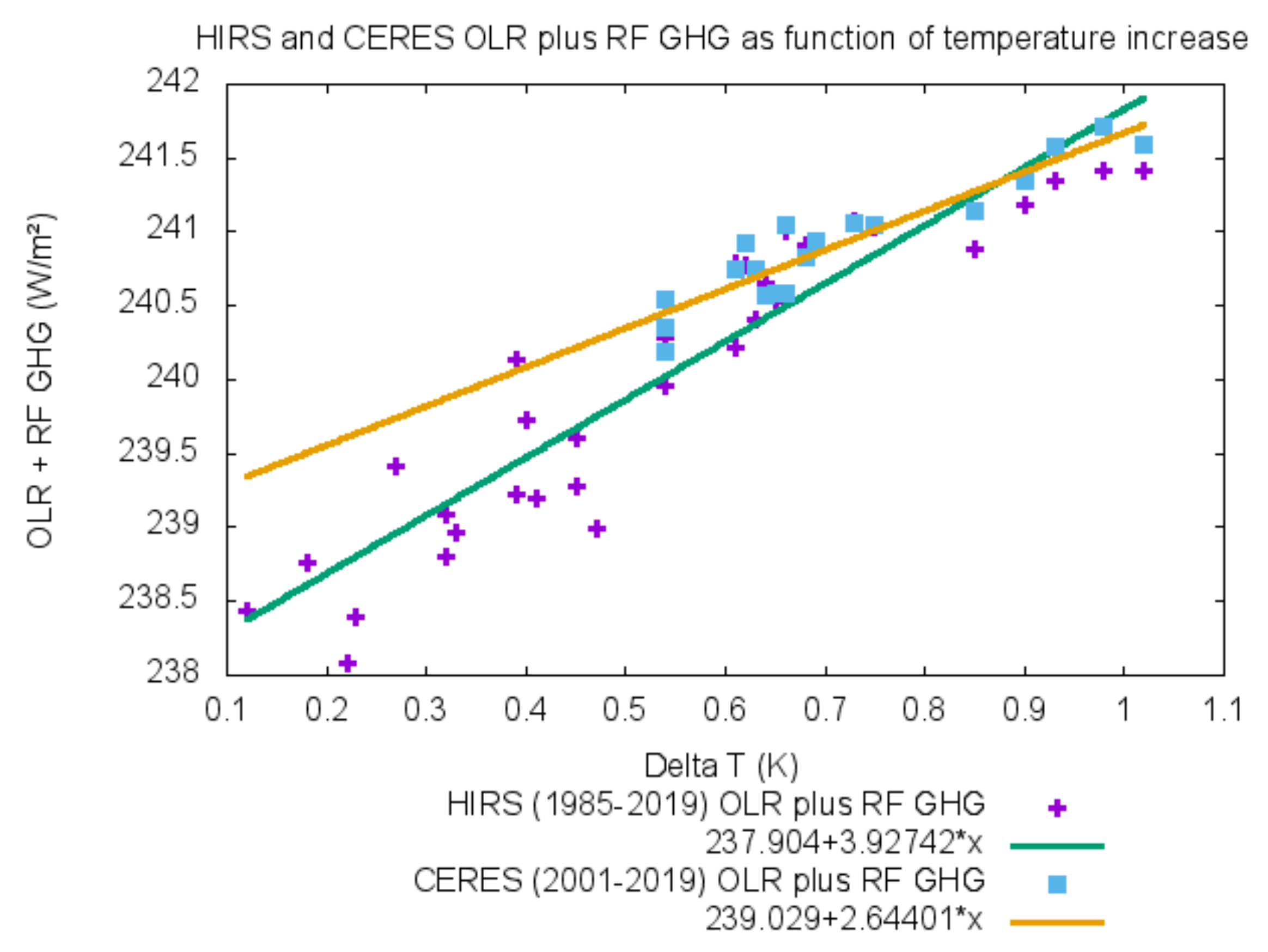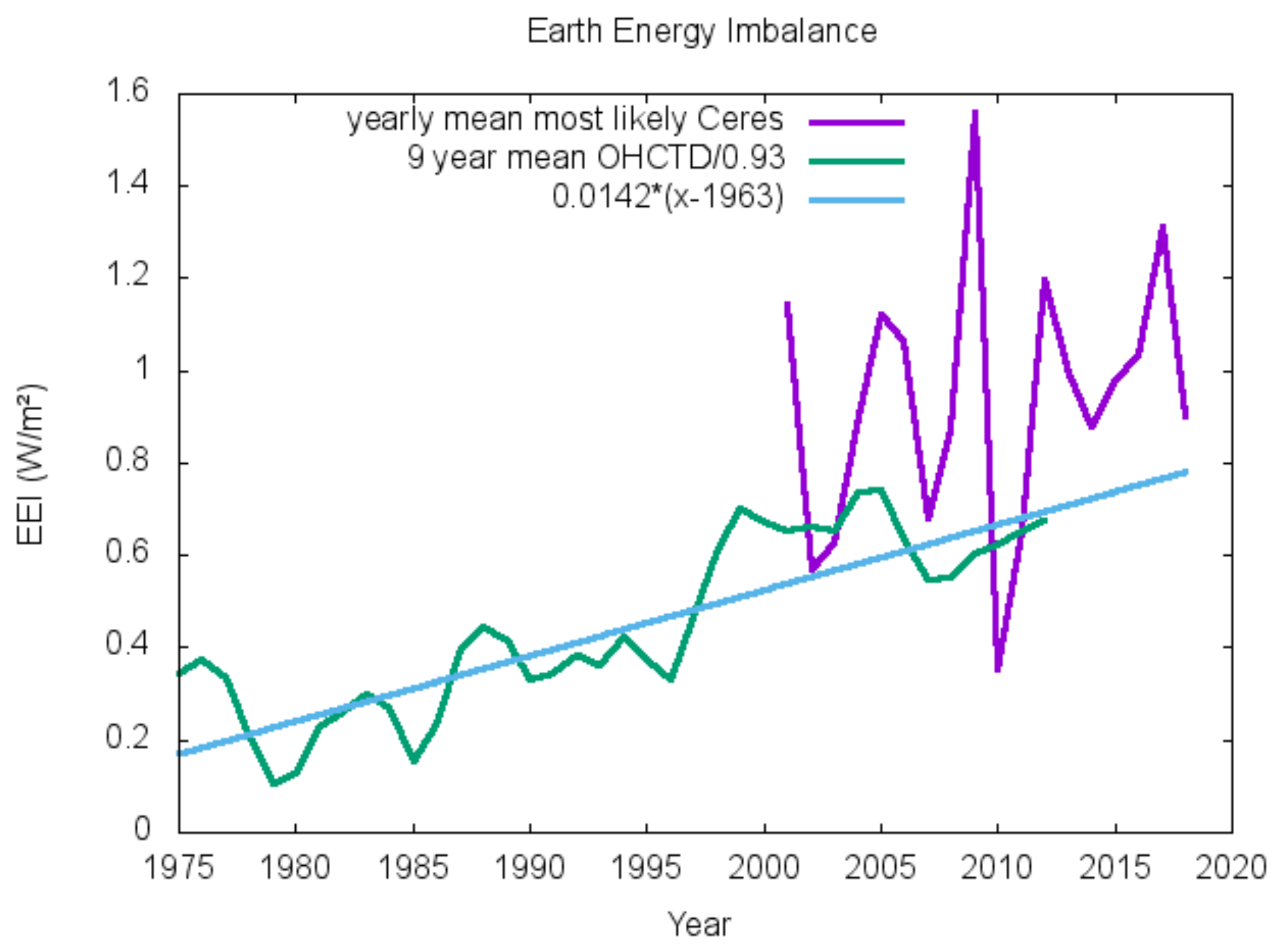Editorial for Special Issue “Earth Radiation Budget”
Abstract
1. Insights in Climate Change from Past and Current Earth Radiation Budget Climate Data Records
- the Incoming Solar Radiation (ISR)—quantified through the Total Solar Irradiance (TSI)
- the Reflected Solar Radiation (RSR)
- the Outgoing Longwave Radiation (OLR)
1.1. Outgoing Longwave Radiation
1.2. Reflected Solar Radiation
1.3. Incoming Solar Radiation
1.4. Earth Energy Imbalance
2. Outlook for Continued or Improved Future ERB Monitoring
3. Other Contributions
Funding
Conflicts of Interest
References
- Dewitte, S.; Clerbaux, N. Decadal Changes of Earth’s Outgoing Longwave Radiation. Remote Sens. 2018, 10, 1539. [Google Scholar] [CrossRef]
- Soden, B.; Held, I. An assessment of climate feedbacks in coupled ocean–atmosphere models. J. Clim. 2006, 19, 3354–3360. [Google Scholar] [CrossRef]
- Dewitte, S.; Clerbaux, N.; Cornelis, J. Decadal Changes of the Reflected Solar Radiation and the Earth Energy Imbalance. Remote Sens. 2019, 11, 663. [Google Scholar] [CrossRef]
- Tian, L.; Chen, J.; Shao, C. Interdependent Dynamics of LAI-Albedo across the Roofing Landscapes: Mongolian and Tibetan Plateaus. Remote Sens. 2018, 10, 1159. [Google Scholar] [CrossRef]
- Kopp, G.; Lawrence, G. The total irradiance monitor (TIM): Instrument design. Sol. Phys. 2005, 230, 91–109. [Google Scholar] [CrossRef]
- Dewitte, S.; Nevens, S. The total solar irradiance climate data record. Astrophys. J. 2016, 830, 25. [Google Scholar] [CrossRef]
- Trenberth, K.E.; Fasullo, J.T.; Von Schuckmann, K.; Cheng, L. Insights into Earth’s energy imbalance from multiple sources. J. Clim. 2016, 29, 7495–7505. [Google Scholar] [CrossRef]
- Cheng, L.; Zhu, J.; Abraham, J.; Trenberth, K.E.; Fasullo, J.T.; Zhang, B.; Yu, F.; Wan, L.; Chen, X.; Song, X. 2018 Continues Record Global Ocean Warming. Adv. Atmos. Sci. 2019, 36, 249–252. [Google Scholar] [CrossRef]
- Cheng, L.; Trenberth, K.E.; Fasullo, J.; Boyer, T.; Abraham, J.; Zhu, J. Improved estimates of ocean heat content from 1960 to 2015. Sci. Adv. 2017, 3, e1601545. [Google Scholar] [CrossRef] [PubMed]
- Akkermans, T.; Clerbaux, N. Narrowband-to-Broadband Conversions for Top-of-Atmosphere Reflectance from the Advanced Very High Resolution Radiometer (AVHRR). Remote Sens. 2020, 12, 305. [Google Scholar] [CrossRef]
- Clerbaux, N.; Akkermans, T.; Baudrez, E.; Velazquez Blazquez, A.; Moutier, W.; Moreels, J.; Aebi, C. The Climate Monitoring SAF Outgoing Longwave Radiation from AVHRR. Remote Sens. 2020, 12, 929. [Google Scholar] [CrossRef]
- Swartz, W.H.; Lorentz, S.R.; Papadakis, S.J.; Huang, P.M.; Smith, A.W.; Deglau, D.M.; Yu, Y.; Reilly, S.M.; Reilly, N.M.; Anderson, D.E. RAVAN: CubeSat Demonstration for Multi-Point Earth Radiation Budget Measurements. Remote Sens. 2019, 11, 796. [Google Scholar] [CrossRef] [PubMed]
- Schifano, L.; Smeesters, L.; Geernaert, T.; Berghmans, F.; Dewitte, S. Design and Analysis of a Next-Generation Wide Field-of-View Earth Radiation Budget Radiometer. Remote Sens. 2020, 12, 425. [Google Scholar] [CrossRef]
- Duan, W.; Huang, S.; Nie, C. Entrance Pupil Irradiance Estimating Model for a Moon-Based Earth Radiation Observatory Instrument. Remote Sens. 2019, 11, 583. [Google Scholar] [CrossRef]
- Kim, B.-Y.; Lee, K.-T. Radiation Component Calculation and Energy Budget Analysis for the Korean Peninsula Region. Remote Sens. 2018, 10, 1147. [Google Scholar] [CrossRef]


| Instrument | Period | |
|---|---|---|
| HIRS | 1985–2019 | 3.93 +/− 0.27 (1 ) W/mK |
| CERES | 2001–2019 | 2.64 +/− 0.24 (1 ) W/mK |
Publisher’s Note: MDPI stays neutral with regard to jurisdictional claims in published maps and institutional affiliations. |
© 2020 by the author. Licensee MDPI, Basel, Switzerland. This article is an open access article distributed under the terms and conditions of the Creative Commons Attribution (CC BY) license (http://creativecommons.org/licenses/by/4.0/).
Share and Cite
Dewitte, S. Editorial for Special Issue “Earth Radiation Budget”. Remote Sens. 2020, 12, 3379. https://doi.org/10.3390/rs12203379
Dewitte S. Editorial for Special Issue “Earth Radiation Budget”. Remote Sensing. 2020; 12(20):3379. https://doi.org/10.3390/rs12203379
Chicago/Turabian StyleDewitte, Steven. 2020. "Editorial for Special Issue “Earth Radiation Budget”" Remote Sensing 12, no. 20: 3379. https://doi.org/10.3390/rs12203379
APA StyleDewitte, S. (2020). Editorial for Special Issue “Earth Radiation Budget”. Remote Sensing, 12(20), 3379. https://doi.org/10.3390/rs12203379




